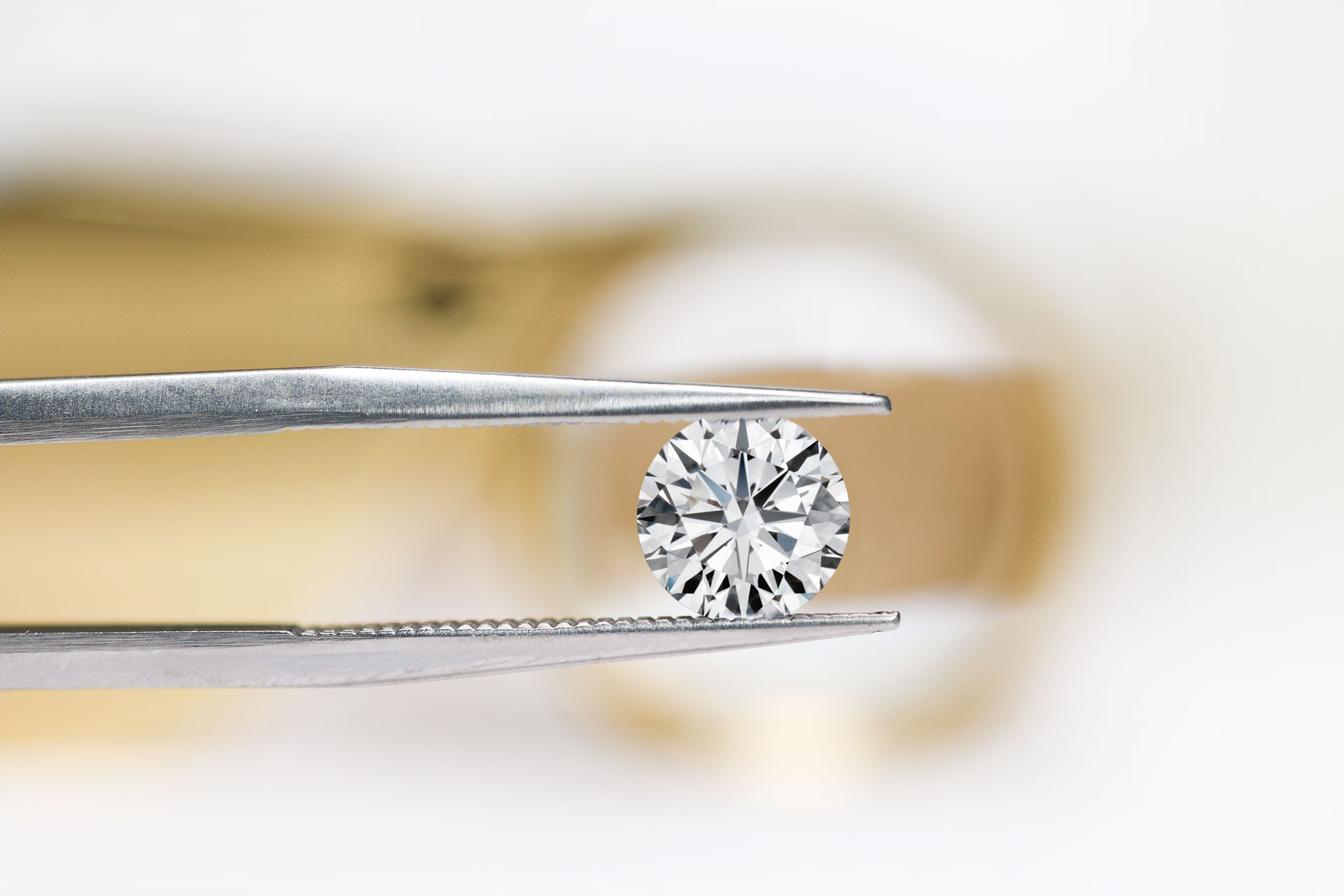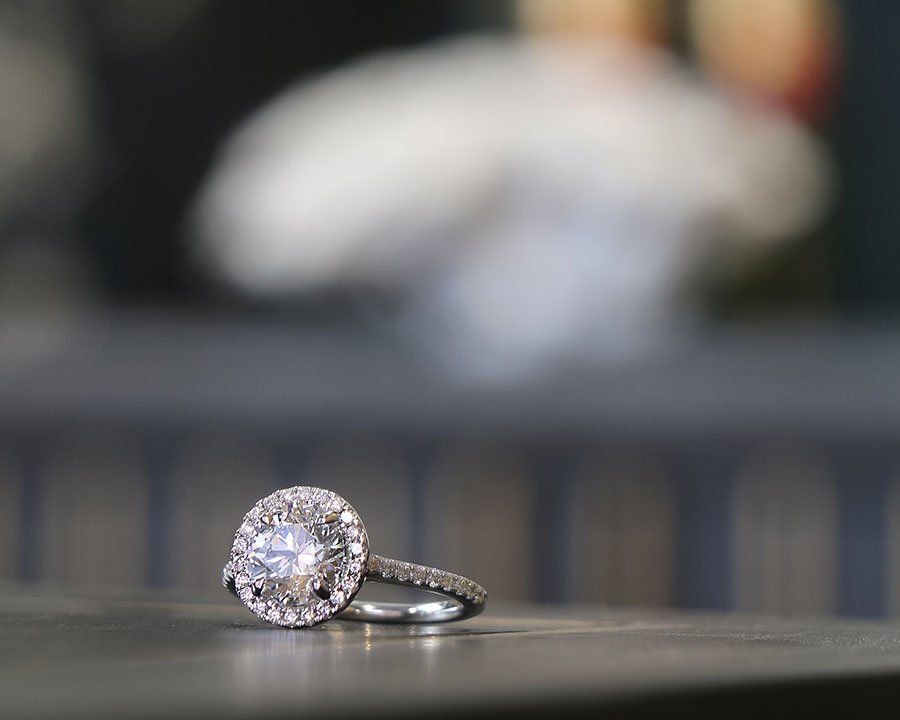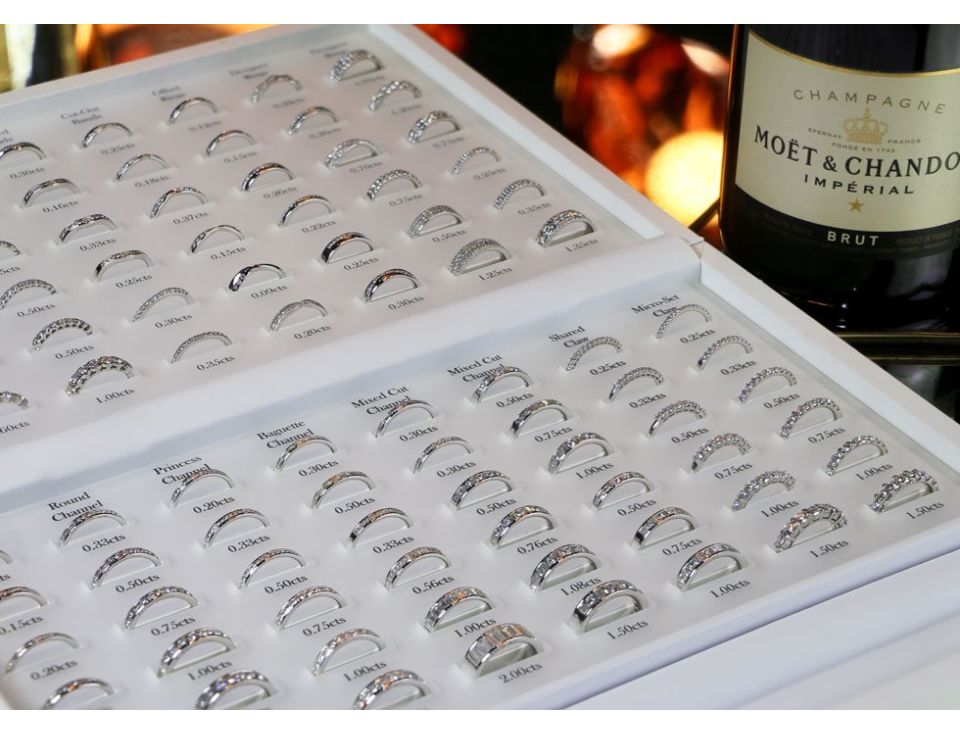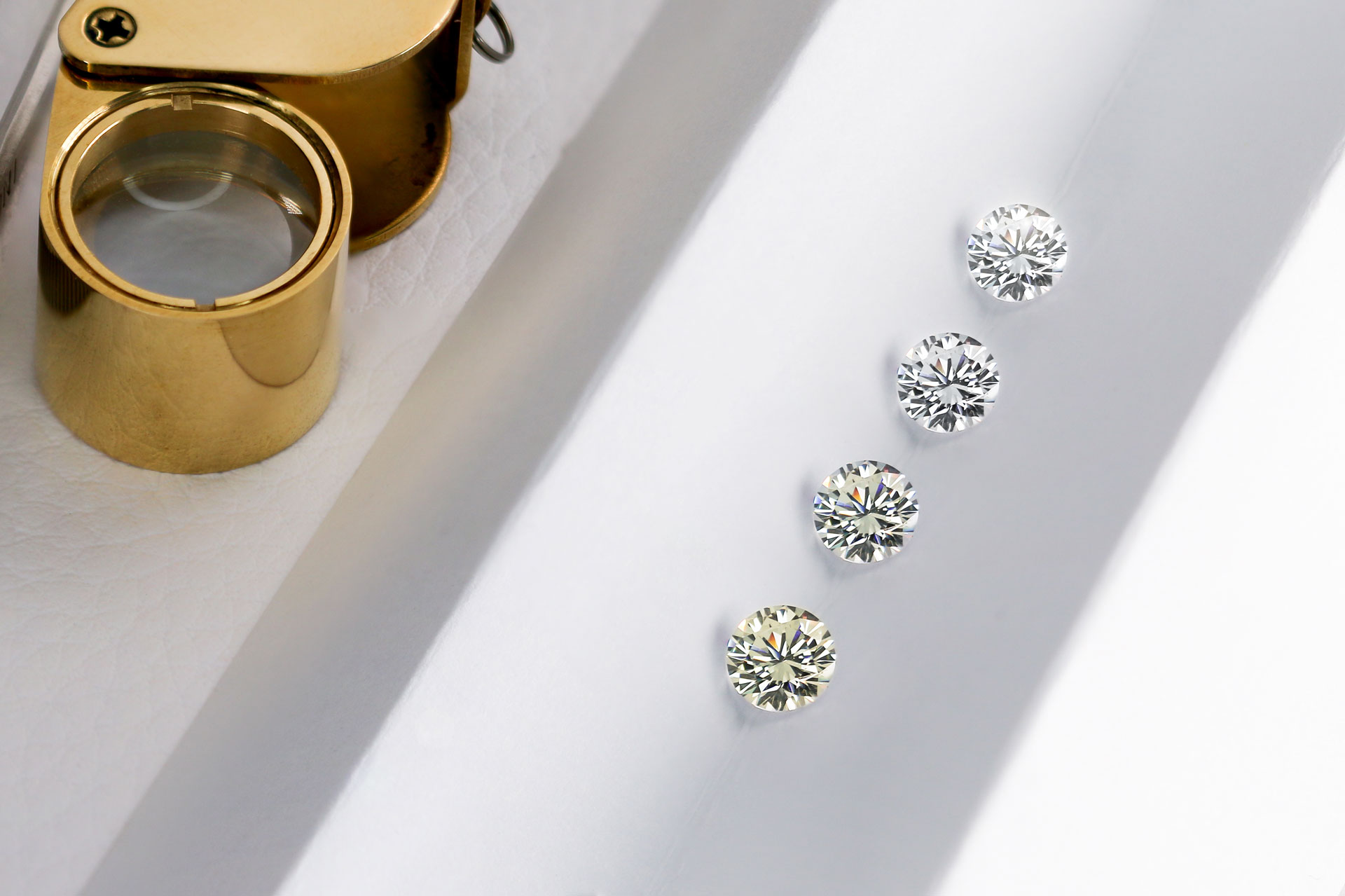Diamond clarity explained
As defined by the GIA, clarity measures the amount, size, and placement of internal inclusions and external blemishes. It is rare to find a diamond without any inclusions or blemishes, however they do exist and these are known as flawless diamonds. These diamond because of their rarity come at a premium and the closer to flawless the greater the price of diamond jewellery and engagement rings.

What Causes Diamond Inclusions?
Natural diamonds form deep within the earth's mantle throughout billions of years, entirely composed of carbon. The carbon molecules crystallise and grow within a highly pressurised heat environment. Through this painstaking formation process, diamonds pick up trace elements. Small cracks and fissures within the diamond result in blemishes and inclusions that may be minimal or severe. These imperfections are measured on the diamond clarity scale.What are the Two Diamond Clarity Characteristics?
There are two types of diamond clarity characteristics to consider. Inclusions are internal growth characteristics. Blemishes are surface imperfections. Some inclusions may be both internal and external, resulting in a weakening of the diamond.Needle: An elongated, thin line of crystal.
Crystal: A tiny diamond or other mineral (s) within the diamond. Crystals may exhibit a faint colour.
Knot: A small crystal that breaks the surface of the diamond, resembling a tiny bump. Crystals are within the interior of the diamond–knots are crystals both internally and externally situated.
Knots impact the durability of the diamond, increasing the chance of it breaking or chipping. If the crystal nestled within the knot falls out, the diamond may crack leaving a large cavity (open space) in its place. Avoiding knots/surface-reaching inclusions aids in the longevity of your diamond.
Cavity or Chip: Cavity and chips are surface indentations caused by stressing a weak point during diamond cutting.
Pinpoints: Small white or black crystals resembling a pinprick visible within the diamond. These inclusions are visible under 10x magnification.
Clouds: Clusters of pinpoint inclusions appear as "milky" or hazy. Clouds may greatly affect the overall appearance of the diamond if they are eye-visible, take up a lot of space, or have noticeable colour.
Feathers: Feathers are internal cracks or fissures that appear see-through, light in colour, and almost feather-like, sometimes undetected without 10x magnification. These wispy inclusions may extend from end to end of the diamond, or hidden by facets depending on its shape.
Twinning Wisp: A twinning wisp indicates two separate growth phases of diamond formation. Twinning wisps appear as two combinations of inclusions, such as pinpoints, needles, feathers, and clouds. These inclusions show that the diamond growth stopped, then restarted.
Graining: long streaks or lines that resemble scratches within the diamond, usually more visible from certain angles. According to GIA, graining refers to optical discontinuities observable with a 10x loupe or a standard gemological microscope.
Understanding the diamond clarity scale
The following is a breakdown of the diamond clarity scale. Diamond clarity helps determine the presence of imperfections and their impact on the diamond's overall appearance, including fire, brilliance, and scintillation.
F: Flawless
Free of inclusions and blemishes. Very rare and the most valuable.
IF: Internal Flawless
Free of inclusions. Minute minor surface blemishes are difficult to see even under 10x magnification.
VVS1-VVS2: Very Very Slightly Included
Microscopic inclusions difficult to detect under 10x magnification. VVS diamonds are priced higher than other diamonds of comparable quality with lower clarity grades.
VS1-VS2: Very Slightly Included
Minor inclusions seen under 10x magnification. VS quality diamonds are popular choices for those who are seeking a higher clarity grade without the premium price of higher clarity grades.
SI1-SI2: Slightly Included
Inclusions are noticeable under 10x magnification
Depending on the location, size, and shape, some inclusions may be eye-visible. SI clarity diamonds are very common choices for engagement rings, offering great value with all the beauty and brilliance diamonds offer.
I1-I2: Included
Visible inclusions under 10x magnification and to the naked eye. These inclusions may detract from the overall beauty of the diamond. I clarity diamonds are frequently used as side diamonds on pave or cluster settings with multiple smaller stones.
I3: Very Included.
Heavily included diamonds with inclusions clearly visible without the aid of magnification. I3 clarity diamonds may be susceptible to breaking because of their weakened structure due to many inclusions.
Highly included diamonds may be marketed as salt and pepper diamonds, offering a world of intrigue behind their mesmerising growth patterns featuring different inclusions.








































